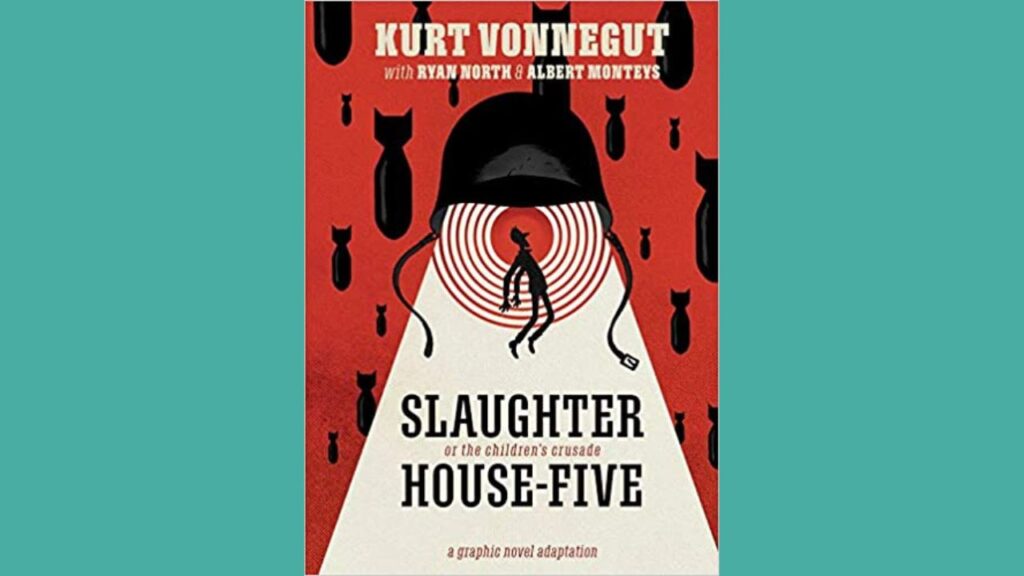
Student Notes – Slaughterhouse-Five by Kurt Vonnegut
Introduction:
Slaughterhouse-Five, written by Kurt Vonnegut and published in 1969, is a satirical and anti-war novel that defies conventional narrative structure. This student note provides an analysis of the novel, including an introduction, setting, historical context, characters, plot summary, key themes and symbolism, analysis and discussion points, and a conclusion. The story follows the experiences of Billy Pilgrim, an optometrist and World War II veteran who becomes “unstuck in time,” traveling back and forth through different moments in his life, including the devastating firebombing of Dresden.
Setting:
World War II:
- The novel primarily takes place during and after the events of World War II.
- The setting includes the battlefields of Europe, specifically the firebombing of Dresden, and the aftermath of the war.
Ilium, New York:
- Billy Pilgrim’s hometown, where he resides before and after the war.
- Symbolizes the mundane and ordinary, contrasting with the horrors of war.
Historical Context:
- Slaughterhouse-Five reflects Vonnegut’s own experiences as a prisoner of war during the bombing of Dresden.
- Written during a time of social and political upheaval, the novel critiques war, explores the impact of trauma, and questions the concept of free will.
Characters:
Billy Pilgrim:
- The protagonist and an unconventional hero of the novel.
- Represents the disorientation and trauma experienced by soldiers during and after war.
Kilgore Trout:
- A science fiction author whose works often appear within the narrative.
- Symbolizes Vonnegut’s own voice and acts as a vehicle for social commentary.
Plot Summary:
- The novel follows Billy Pilgrim’s non-linear journey through time, from his experiences as a soldier in World War II to his post-war life as an optometrist.
- Billy’s travels through time allow Vonnegut to explore themes of war, fate, and the consequences of human actions.
- The narrative delves into the bombing of Dresden, highlighting the destruction and senselessness of war.
Key Themes and Symbolism:
The Absurdity of War:
- Vonnegut uses dark humor and irony to critique the horrors and futility of war.
- The juxtaposition of the absurd and the tragic underscores the senselessness of violence.
Trauma and Time:
- Billy’s time-traveling experiences reflect the fragmentation and disorientation caused by trauma.
- Time becomes fluid, blurring past, present, and future, mirroring the psychological impact of war.
Free Will and Determinism:
- The novel explores the tension between personal agency and the forces of fate.
- Billy’s experiences suggest that human actions may be predetermined and that individuals are helpless against larger historical forces.
Analysis and Discussion Points:
- Vonnegut’s use of metafiction and unconventional narrative structure to convey the chaos and fragmentation of war.
- The role of science fiction elements and Kilgore Trout’s writings as a commentary on society and human nature.
- The moral ambiguity surrounding the firebombing of Dresden and its representation in the novel.
Conclusion:
Slaughterhouse-Five by Kurt Vonnegut is a powerful and thought-provoking anti-war novel that challenges traditional storytelling conventions. Through its unconventional narrative structure and dark humor, Vonnegut invites readers to confront the horrors of war, question the nature of free will, and contemplate the lasting impact of trauma on individuals and society. The novel’s timeless themes and its ability to provoke introspection and dialogue have solidified its place as a significant work of literature. Slaughterhouse-Five continues to resonate with readers, serving as a reminder of the consequences of war and the enduring search for meaning in a chaotic world.





